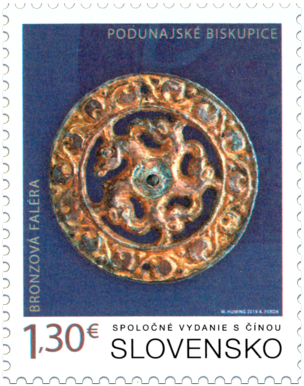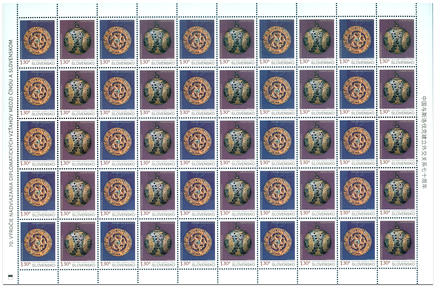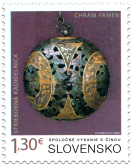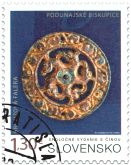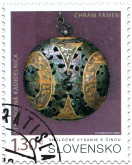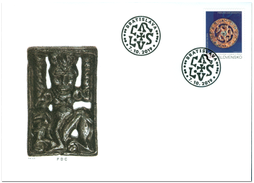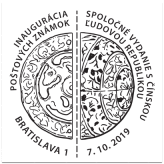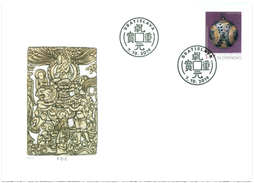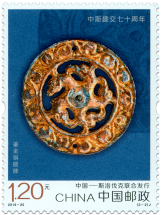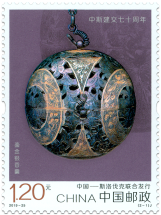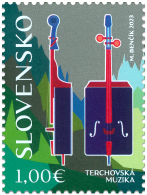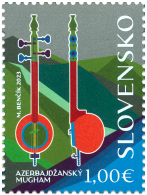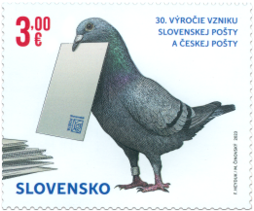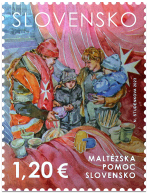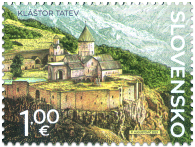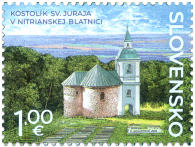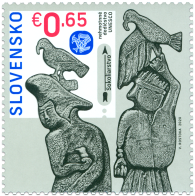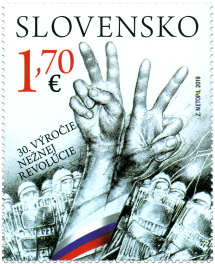695 Date of issue
07.10.2019 Face value
1.30 € Sell price
1.30 €
This joint issue of a postage stamp is issued in the occasion of the 70th anniversary of the establishment of diplomatic relations between China and Slovakia. This issue is represented by the most important archaeological findings from the time of the reign of the Tang Dynasty (618 – 907) and shows the similar cultural aspects of the two, at first glance, very different cultures but thanks to the trade along the Silk Road, associated countries. From the 6th up to the beginning of the 8th century the territory of modern day Slovakia was under the control of the Avars who were nomadic tribes of Turkic origin from Inner Asia. According to some byzantine writers such as Menander Protector it was a tribe of Varchonites (War and Chun), escaped slaves from the Turkic Khaganate, who were situated in the central part of Asia between 559 and 659. The Avars benefited from the trade exchange of oriental goods exported westward along the Silk Road. The Sogdians played an important role as mediators in the cultural and spiritual exchanges between the east and west. They were merchants and messengers who also spread Zoroastrianism to other regions. They, together with some Turkic tribes, obtained permission from the Byzantine Emperor for their commercial activity on the Silk Road in 568.
One of the most important archaeological discoveries from the time of Avar Khaganate is the burial ground at Bratislava-Podunajské Biskupice which was excavated in 2017, during the works that preceded the building of the Bratislava D4/R7 motorway bypass. 485 graves were discovered and most of them remained untouched. The most numerous findings were ceramic vessels with typical Slavic decorations in the form of wavy lines. Other valuable finds were undoubtedly the jewellery and ornaments, found in both the female and male graves. Decorative belt fittings made from iron or bronze, decorated with floral or geometric motifs, were typical of the accessories particularly found in the male graves that included buried horses.
The postage stamp depicts a round bronze-gilded phalera which was part of a horse harness found in a horseman’s grave, No. 441. The openwork decoration consists of five heads of griffins with a round frieze in the form of wavy line plants. Among the Avar tribes the griffin was a very popular mythological animal mainly depicted on bronze belt fittings as an insignia showing the social status of its owner. The FDC depicts one of the remarkable bronze gilded belt fittings discovered in the horseman’s grave, No. 85, with the unique motif of a woman sitting on a lion, identical to the Sassanian goddess Anahita from the Zoroastrian religion. The FDC cancellation is created according to Charles the Great dinar that was found in a female grave, No. 168. The coin probably entered our territory between 791 and 796, when the Frankish Empire fought a few battles with the Avars and was later used as a medallion.
Martin Vančo
© 2024 POFIS - Postal philatelic service. All rights reserved

